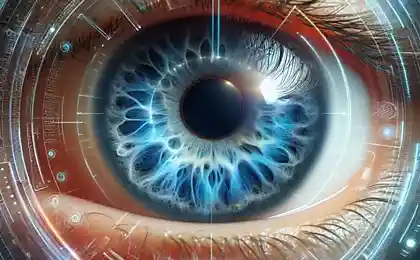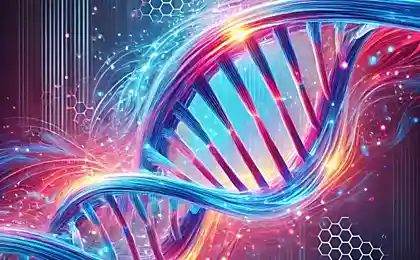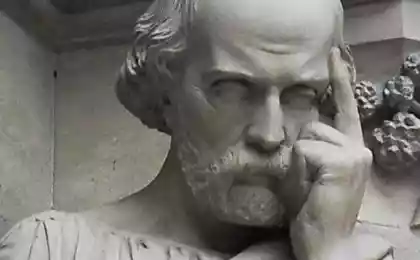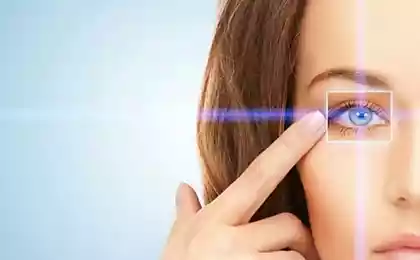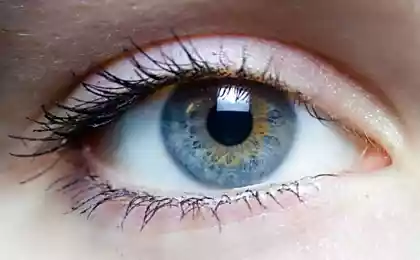1559
Sight can be restored at some kinds of blindness with the help of technology, using light-sensitive molecules algae
If the photoreceptors in the eye due to injury, illness, or because of a genetic predisposition can not fulfill its function, the person fully or partially deprived of. Now to fix this problem, people wear glasses, but a new method of gene therapy is ready for human trials.
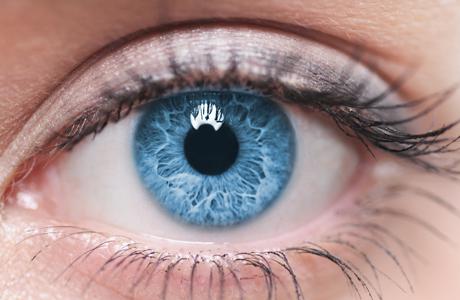
In 1990, an experiment was conducted: a man who was blind the last 50 years, introduced into the eye an electric probe. And the man saw the light, although photoreceptors in his eyes for a long time dead. So scientists have found that ganglion cells in the non-performing photoreceptors are able to send signals about the images.
In 2005 there was a technique to study the work of nerve cells is to introduce into their specific membrane channels - opsins, responsive to the excitation light. The technique is called «оптогенетика». The new technology, which is capable of partially restore vision, is part of optogenetics.
Technology focused on working with the ganglion cells, which are located behind the photoreceptors of the eye. Ganglion cell border with the vitreous eye retina and form a layer which first receives the light. These cells receive a signal from the photoreceptor and generates nerve impulses that are sent to the brain. Scientists suggest around a "mediator" in the form of photoreceptors and create similar receptors in the ganglion cells themselves.
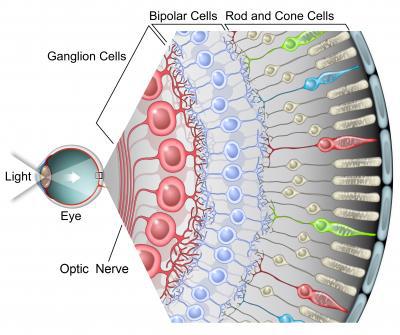
For this purpose, the membrane photosensitive ganglion cells are implanted molecules of algae and microorganisms. For example, Channelrhodopsin-2, extracted from green algae. The protein is blocked when there is no light, but if any channel opens and passes ions.

While optogenetics technically a form of gene therapy, it works a little differently. Instead of working with the genes for the resumption of photoreceptor function, a new method of making cells photosensitive cell transmitters, ie adds a new feature to the already existing.
Potentially, the technology can be applied to the 200,000 people who suffer from blindness caused by one of the known gene mutations 250 in the US alone. In 2016, plans to start human trials.
Source: geektimes.ru/post/250702/

In 1990, an experiment was conducted: a man who was blind the last 50 years, introduced into the eye an electric probe. And the man saw the light, although photoreceptors in his eyes for a long time dead. So scientists have found that ganglion cells in the non-performing photoreceptors are able to send signals about the images.
In 2005 there was a technique to study the work of nerve cells is to introduce into their specific membrane channels - opsins, responsive to the excitation light. The technique is called «оптогенетика». The new technology, which is capable of partially restore vision, is part of optogenetics.
Technology focused on working with the ganglion cells, which are located behind the photoreceptors of the eye. Ganglion cell border with the vitreous eye retina and form a layer which first receives the light. These cells receive a signal from the photoreceptor and generates nerve impulses that are sent to the brain. Scientists suggest around a "mediator" in the form of photoreceptors and create similar receptors in the ganglion cells themselves.

For this purpose, the membrane photosensitive ganglion cells are implanted molecules of algae and microorganisms. For example, Channelrhodopsin-2, extracted from green algae. The protein is blocked when there is no light, but if any channel opens and passes ions.

While optogenetics technically a form of gene therapy, it works a little differently. Instead of working with the genes for the resumption of photoreceptor function, a new method of making cells photosensitive cell transmitters, ie adds a new feature to the already existing.
Potentially, the technology can be applied to the 200,000 people who suffer from blindness caused by one of the known gene mutations 250 in the US alone. In 2016, plans to start human trials.
Source: geektimes.ru/post/250702/
The sounds of nature to increase labor productivity and improve mood
Video of construction "Gigafabriki batteries» Tesla in 4Q

